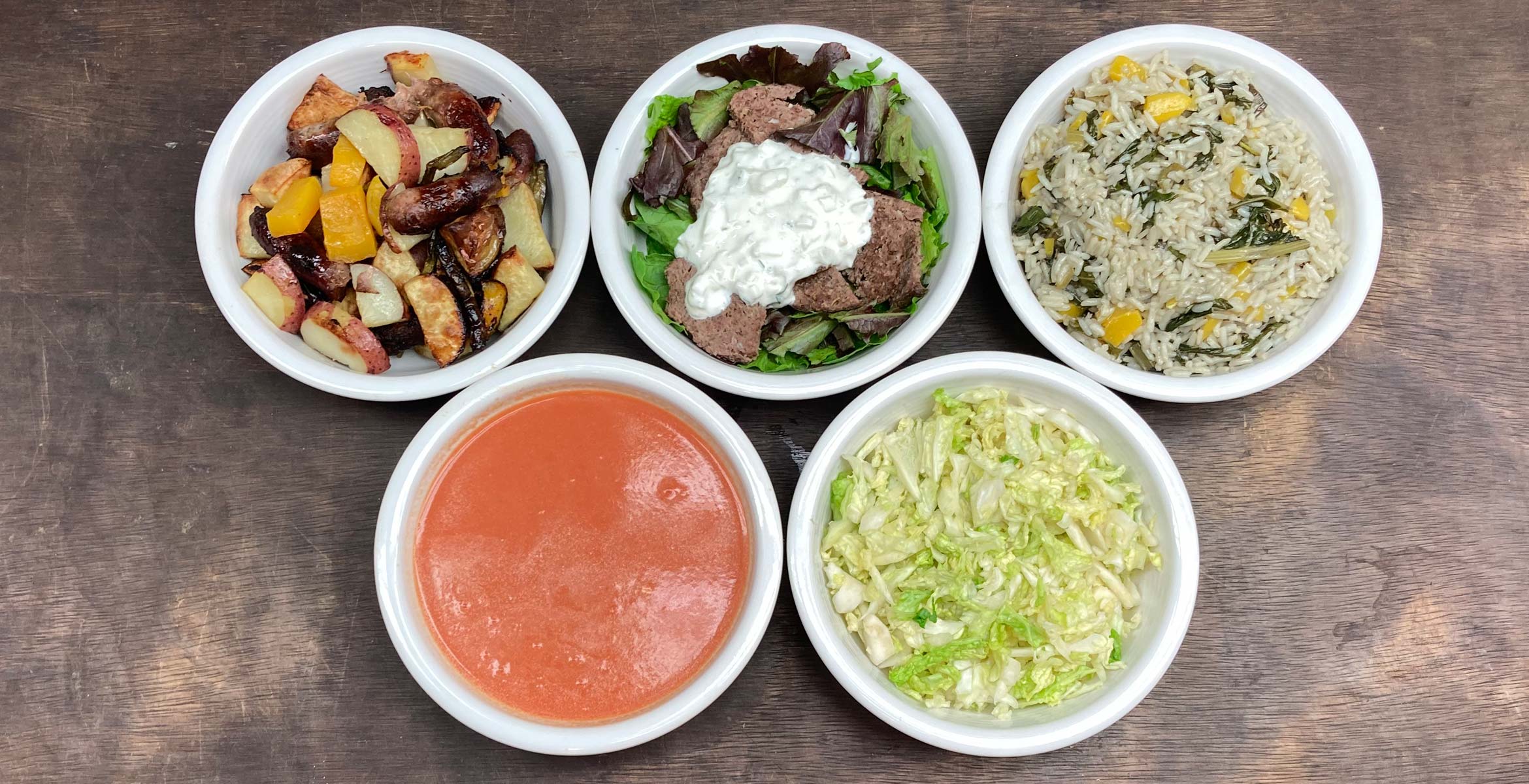
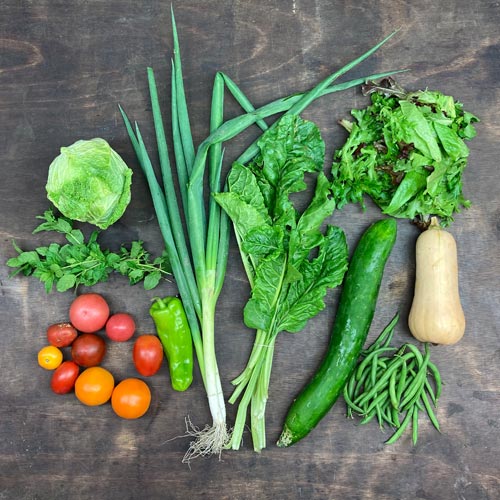
This week we have a really nice varieity of vegetables which hit a wide range of flavors and textures. This week we had a large winter squash harvest, and we expect to do that every other week from now until frost. Our peppers are also starting to produce more, and the plants are loaded with small fruit. Our peppers got a late start because we lost a lot of seedlings back in March & April to a soilborne disease caused by too much moisture and too low of temperatures. Next year we’ll stage our seedlings differently to learn from this year’s setbacks. We really appreciate seeing and hearing how you’ve been using your CSA shares. Thank you and have a great week!
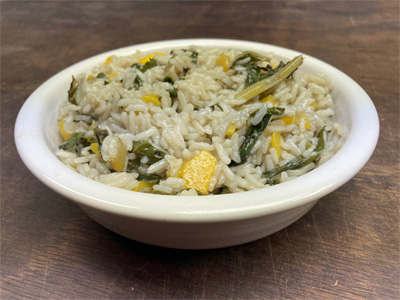
Swiss Chard & Squash Risotto
Heat 5 cups of stock in a medium sized saucepan until steamy, lower the heat and keep warm while you make the risotto.
Add 2 cups of rice and toss to coat with the butter and onions. Let cook until the grains are translucent around the edges and beginning to color, about 2 to 3 minutes. Add 1/2 cup white wine and stir it into the rice. Simmer and stir until the wine is almost completely boiled away or absorbed by the rice.
Begin to add the broth, a ladleful (about 1/2 a cup) at a time. After each addition of broth, stir the rice and do not add another ladleful until the liquid in the pot has been almost all absorbed by the rice.
When you are getting close to using up your heated broth, taste the risotto and add more salt if needed. Note that you will be adding Parmesan in the next step which is salty, so you may want to wait before adding more salt.
Stir in 1 Tbsp butter, 1/2 cups Parmesan (optional), all of the swiss chard chopped, 1 tsp lemon zest and 1 tsp lemon juice.
The risotto is ready when it is al dente, cooked through but still a little chewy to the bite, not mushy. Add a little more broth to loosen the risotto. Taste for salt and add salt and pepper to taste. Serve immediately.
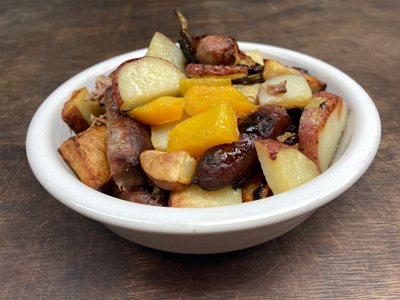
Sheet Pan Sausage, Butternut Squash, Potatoes and Green beans
Skin and chop 1/2 of the butternut into bite sized pieces. Snap the ends off of the beans and cut them in half. Chop 3 medium potatoes into bite sized pieces. Toss the potatoes, green beans in 2 Tbsp of olive oil. Toss the squash in 1 Tbsp olive oil, and 1 tsp honey. Cut 1 package of breakfast sausage links in half.
Spread everything except the sausage onto a baking sheet, roast in the oven at 450 for 30 minutes. Add the sausage and roast for another 20 minutes.
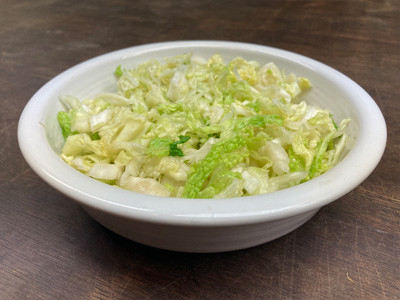
Sauerkraut
Rinse, then finely chop cabbage, either removing the core or julienning it. Add the cabbage to a very large bowl, then weigh it. The cabbage needs a 2-3% salt solution/brine in order to lactoferment. Multiply the weight of the cabbage by 2.5%, for example if the cabbage weighs 2lb, then 2lb x .025 = 0.05lb of salt. Thoroughly mix the salt with the cabbage in the bowl and allow cabbage 30-60 minutes to sweat and release some water content, which will serve as the brine.
Pack the cabbage/salt mixture into mason jars, pressing firmly so that the brine covers the cabbage. Place a large cabbage wrapper leaf across the top surface of the mixture, then add a second weighted jar, clean rock, or other weight to the top so that the cabbage is continually pressed below the brine. Add a loose lid to the top of the jar.
Over the first few days of the fermenting period there will be a lot of carbonation released as the fermentation takes place, so press the mixture down daily to push the gas out so that you do not lose brine if the mixture spills over the top of the jar.
Allow kraut to ferment for 1-2 weeks, or up to 4 weeks depending on desired flavor and texture. Then move the the refrigerator where it will keep for many months.
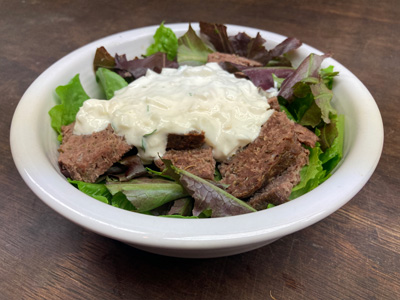
Gryo Salad
Tzatziki Sauce:Place the chopped 1/2 cucumber minced in a tea towel and squeeze to remove the liquid; discard liquid. In a medium mixing bowl, combine 16 ounces plain yogurt, cucumber, pinch of salt salt, 4 cloves minced garlic,1 Tbsp olive oil, 2 tsp red wine vinegar, and 1 to 2 Tbsp mint. Serve as a sauce for gyros. Store in the refrigerator in an airtight container for up to a week.
Gyro Meat:Process 1 medium onion, finely chopped in a food processor for 10 to 15 seconds and turn out into the center of a tea towel. Gather up the ends of the towel and squeeze until almost all of the juice is removed. Discard juice.
Return the onion to the food processor and add the 2 pounds of ground lamb, 1 Tbsp finely minced garlic, 1 Tbsp marjoram, 1 Tbsp rosemary, 2 tsp salt, and 1/2 tsp pepper and process until it is a fine paste, approximately 1 minute. Stop the processor as needed to scrape down sides of bowl.
Preheat the oven to 325 degrees F. Place the mixture into a loaf pan, making sure to press into the sides of the pan. Place the loaf pan into a water bath and bake for 60 to 75 minutes or until the mixture reaches 165 to 170 degrees F. Remove from the oven and drain off any fat. Place the loaf pan on a cooling rack and place a brick wrapped in aluminum foil directly on the surface of the meat and allow it to sit for 15 to 20 minutes, until the internal temperature reaches 175 degrees F.
Slice and serve on pita bread with tzatziki sauce, chopped onion, tomatoes and feta cheese or on a bed of lettuce.
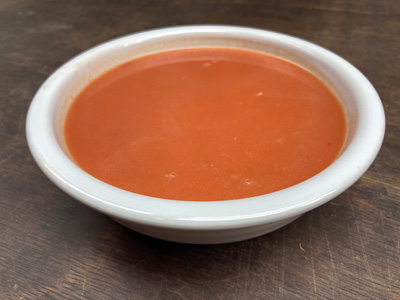
Gazpacho
Combine 1.5-2lb tomatoes, 1 bell or cubanelle pepper, 1/2 of the cucumber (peeled), 1 green onion, whites only, and 1 clove garlic, all roughly chopped, in a blender or, if using a hand blender, in a deep bowl. (If necessary, work in batches.) Blend at high speed until very smooth, at least 2 minutes, pausing occasionally to scrape down the sides with a rubber spatula.
With the motor running, add 2 tsp red wine vinegar and 2 teaspoons salt. Slowly drizzle in 1/2 cup olive oil. The mixture will turn bright orange or dark pink and become smooth and emulsified, like a salad dressing. If it still seems watery, drizzle in more olive oil until texture is creamy.
Strain the mixture through a strainer or a food mill, pushing all the liquid through with a spatula or the back of a ladle. Discard the solids. Transfer to a large pitcher (preferably glass) and chill until very cold, at least 6 hours or overnight.
Before serving, adjust the seasonings with salt and vinegar. If soup is very thick, stir in a few tablespoons ice water. Serve in glasses, over ice if desired, or in a bowl.
Ingredients
The first table shows the ingredients that come in the share. The table after that shows the ingredients you would need to make the recipes.
| Swiss Chard & Squash Risotto | Sheet Pan Sausage, Butternut Squash, Potatoes and Green beans | Sauerkraut | Gryo Salad | Gazpacho | |
| chicken stock | 5 cups | ||||
|---|---|---|---|---|---|
| butter | 5 Tbsp | ||||
| garlic | 4 cloves | 4 cloves + 1 Tbsp | 1 clove | ||
| rice | 4 cups | ||||
| white wine | 1/2 cup | ||||
| Parmesan | 1/2 cup | ||||
| lemon zest and juice | 1 tsp each | ||||
| potatoes | 3 | ||||
| olive oil | 2 Tbsp | 1 Tbsp | 1/2 cup | ||
| honey | 1 tsp | ||||
| breakfast sausage links | 1 lb | ||||
| plain yogurt | 16 oz | ||||
| red wine vinegar | 2 tsp | 2 tsp | |||
| onion | 1 medium | ||||
| ground lamb | 2 lbs | ||||
| marjoram | 1 Tbsp | ||||
| rosemary | 1 Tbsp | ||||
| feta cheese | 5 oz |
